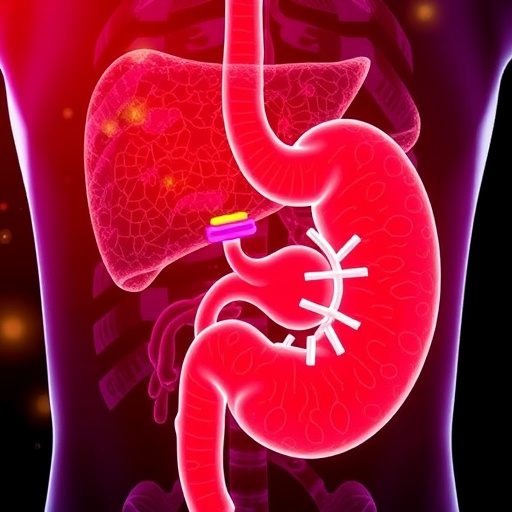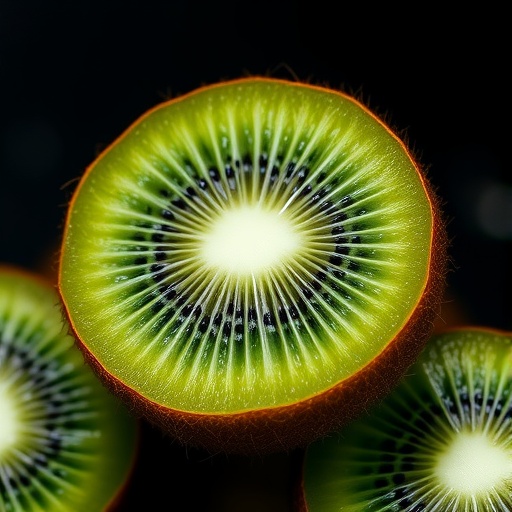
Credit: Baylor College of Medicine
A fusion gene is a new gene made by joining parts of two different genes. The current thought is that fusion genes can happen in cells with unstable genome when part of the DNA from one chromosome moves to another chromosome. When the fusion gene is transcribed into RNA, the product is a fusion RNA that then is translated into a fusion protein. Fusion proteins may lead to cancer development. For instance, they are found in some types of cancer such as leukemia, prostate, breast, lung and others, and are being studied for the diagnosis and treatment of these diseases.
“According to this accepted notion, fusion genes precede fusion RNA, but some studies have raised doubts that this is always the case. In particular, cancer studies have reported the presence of fusion RNA in individuals in which the corresponding fusion gene cannot be detected,” said corresponding author Dr. Laising Yen, associate professor of pathology & immunology and of molecular and cellular biology at Baylor College of Medicine.
To explain these findings, about 10 years ago scientists proposed the ‘cart-before-the-horse-hypothesis,’ which puts forward the idea that fusion RNA can form first and then guide the rearrangement of genes to form the corresponding fusion gene. Although this process has been found in simpler organisms such as the paramecium, studies have yet to come forward showing that this proposed RNA-mediate gene rearrangements also happen in mammalian cells. Until now.
“The Yen lab works on RNA, and one of our interests is to study it in relation to cancer, ovarian and prostate cancer specifically,” said first author Dr. Sachin Kumar Gupta, postdoctoral associate in pathology at Baylor College of Medicine. “In this study, we investigated whether the cart could actually be before the horse. Can a fusion RNA induce the corresponding fusion gene?”
The researchers worked with prostate cancer cell line LNCaP, which lacks the fusion gene TMPRSS2-ERG found in 50 percent of prostate cancers. To test “the cart before the horse” hypothesis, Gupta and his colleagues expressed in LNCaP cells a short fusion RNA consisting of part gene TMPRSS2 and part gene ERG. If the short fusion RNA led to the formation of the fusion gene TMPRSS2-ERG, they expected to find evidence of the newly created fused gene both in the DNA genome and in the form of the full-length fusion RNA produced from that fusion gene.
Making sense of the ‘cart before the horse’
“When we expressed the sense or coding short fusion RNA, we did not detect evidence that the fusion gene had been formed,” Gupta said. “We then thought, why not try the antisense fusion RNA instead?”
Antisense RNA is an RNA strand with a sequence that is complementary to the one of a sense or coding RNA. Coding RNA is the one that is involved in the translation of genetic instructions into protein. In theory, the authors explain, antisense RNAs should bind to the same genome segment sense RNA binds, just to a different DNA strand, and could mediate gene rearrangements leading to the formation of fusion genes.
“We found that if we overexpress the short fusion RNA in the antisense orientation, but not in the sense orientation, we can induce gene fusion in a tissue culture setting in three days,” Yen said. “We showed this for two different fusion genes.”
“We were very surprised. This is a non-coding RNA for which we have shown a new function: it can induce the formation of fusion genes. The antisense RNA, not the sense RNA, is the cart before the horse,” Gupta said.
The researchers also showed that this RNA-induced gene fusion can occur in non-cancerous, normal cells. Expressing antisense fusion RNA in normal prostate epithelial cell lines resulted in the formation of the corresponding fusion gene in these cells.
“Our study suggests an early stage mechanism for the formation of cancer fusion genes that provides a new perspective in cancer development,” Yen said. “We have uncovered a second way by which gene recombination can happen. We propose that this process is mediated by RNA with sequences that are similar to, and antisense to, those of the joined genes.”
Cancer fusion genes are important for therapy and biomarker development. Fusion genes also have a lot to say regarding how a normal cell begins to transform into a cancer cell. Therefore, the authors explain, understanding the mechanisms of fusion gene formation could lead to the development of treatments to prevent cancer.
The researchers would next like to investigate whether RNA-mediated gene fusion also can happen in other types of cancer and explore the molecular mechanism for diagnosis and therapy.
###
Interested in learning all the details of this work? Read it in the Proceedings of the National Academy of Sciences.
Dr. Liming Luo at Baylor College of Medicine also contributed to this work.
Financial support was provided by the National Institutes of Health (grants R01EB013584, DK56338, and CA125123), the Cancer Prevention Research Institute of Texas (grants HIHRRA RP160795, RP150578, RP160283), the Pilot Grant from Dan L Duncan Comprehensive Cancer Center and the Dunn Gulf Coast Consortium for Chemical Genomics.
Media Contact
Dana Benson
[email protected]
713-798-4710
Original Source
https:/
Related Journal Article
http://dx.




